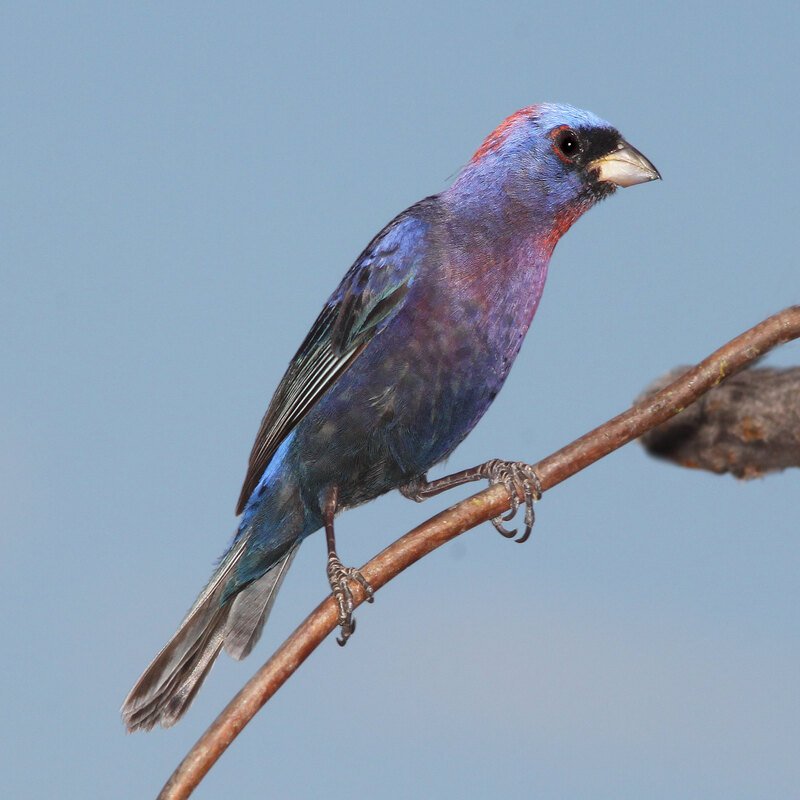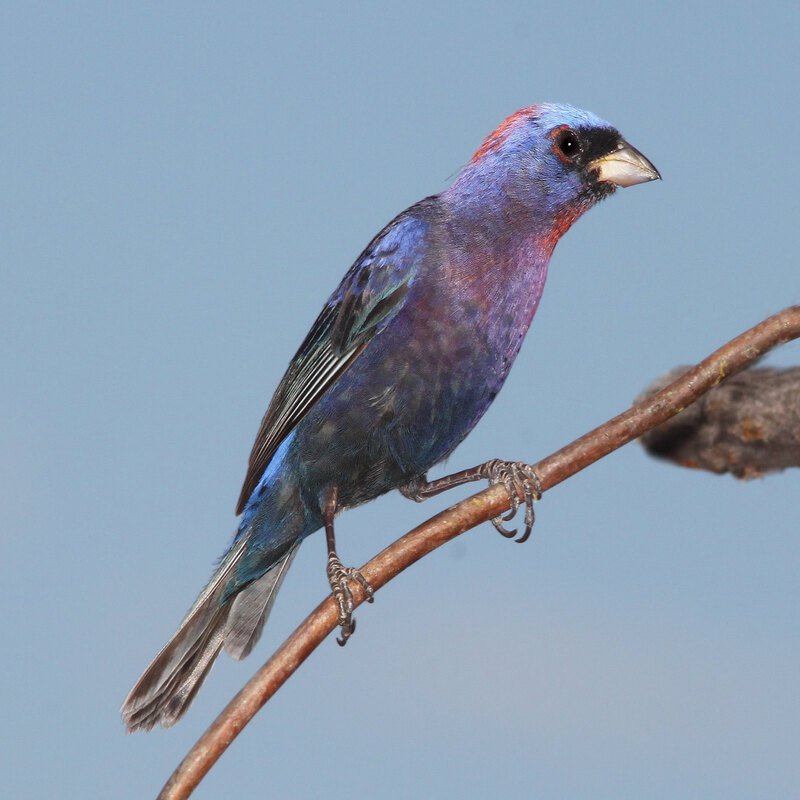The Passerina versicolor, also known as the varied bunting, is a species of songbird belonging to the Cardinalidae family, which includes the cardinals. This beautiful songbird avoids densely populated areas and does not frequently visit feeders, preferring to forage low in dense vegetation while twitching its tail and wings to flush out insects.
Quick Overview: Latin Name – Common Name
Body size: Around 13-14 cm (5-5.5 in) in length and weighed 11g (.4 oz).
Main colors: Purple-Blue, Red, Gray, Brown
Range: Throughout the United States
Migratory Bird: Yes
Best time of the year to see in the U.S.: All Year (January – December)
Conservation Status: Least Concern
Varied bunting Description
Varied bunting is medium, mostly purple-blue in color with red wash on the throat, breast, and back bird. The redness extends to the nape and eye-rings. The bill is gray in color and slightly curved downward. The color of the wings and tail are purple-blue. The female has brown upperparts and buff underparts, with brown upperparts and buff underparts.

Size
This medium-sized bird is 13-14 cm (5-5.5 in) in length and weighed 11g (.4 oz). Its wingspan could range around 8-8.5 in (20-22 cm).
Feeding
These birds forage in low, dense vegetation and on the ground, consuming seeds and insects in the process.
Habitat
Various buntings can be found in deserts and xeric shrub lands, with thorny brush thickets, thorn forests, scrubby woodlands, and overgrown clearings being their preferred habitats. In the outer branches of thorny plants, buntings build open-cup nests of grass and spider webs, which they place near bodies of water or other bodies of water.
Behavior
The Varied Bunting’s songs contain a significantly more variable assortment of notes, as well as significantly less repetition, than the songs of Indigo or Lazuli.
The Varied Bunting usually begins nesting in late May or early June, but some birds do not begin singing and constructing nests until the beginning of summer rains, which occurs in July or August.
Passerina Versicolor Scientific Classification
- Kingdom: Animalia
- Phylum: Arthropoda
- Subphylum: Chelicerata
- Class: Aves
- Order: Passeriformes
- Family: Cardinalidae
- Genus: Passerina
- Species: Passerina versicolor
Best time of the year to see
In the United States, the best time of year to see these birds is all year round, regardless of the season. This refers to any month of the year between January and December.
Distribution of the Varied bunting in the USA
The Varied Bunting has a large range, which is estimated to be approximately 1,400,000 square kilometers worldwide by some sources. This bird, which is native to Guatemala, Canada, the United States, and Mexico, prefers shrub land ecosystems in the subtropical or tropical regions.
The Varied bunting can be found in the following states in the United States – Alabama, Alaska, Arizona, Arkansas, California, Colorado, Connecticut, Delaware, Florida, Georgia, Hawaii, Idaho, Illinois, Indiana, Iowa, Kansas, Kentucky, Louisiana, Maine, Maryland, Massachusetts, Michigan, Minnesota, Mississippi, Missouri, Montana, Nebraska, Nevada, New Hampshire, New Jersey, New Mexico, New York, North Carolina, North Dakota, Ohio, Oklahoma, Oregon, Pennsylvania, Rhode Island, South Carolina, South Dakota, Tennessee, Texas, Utah, Vermont, Virginia, Washington, West Virginia, Wisconsin and Wyoming.


